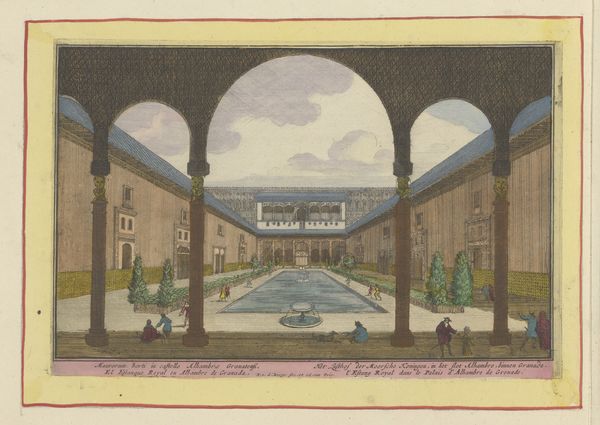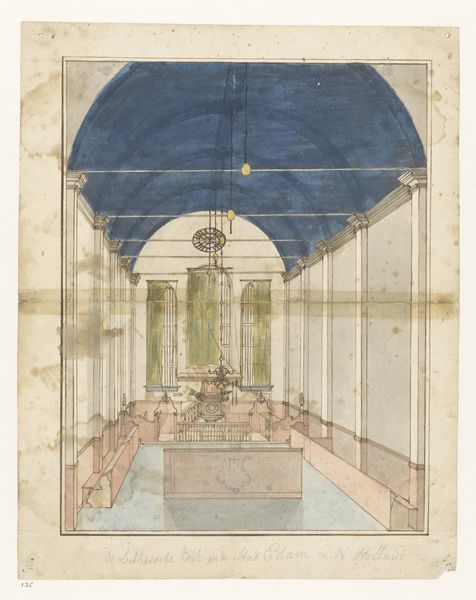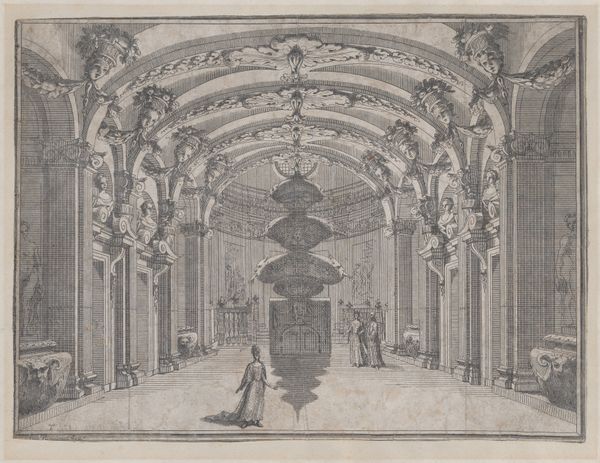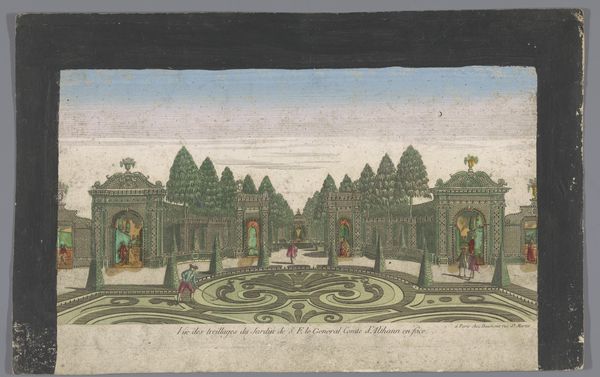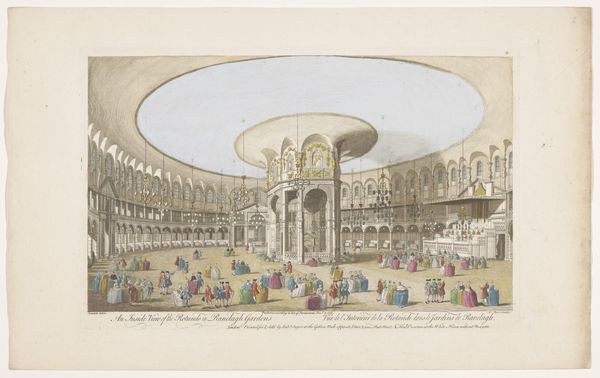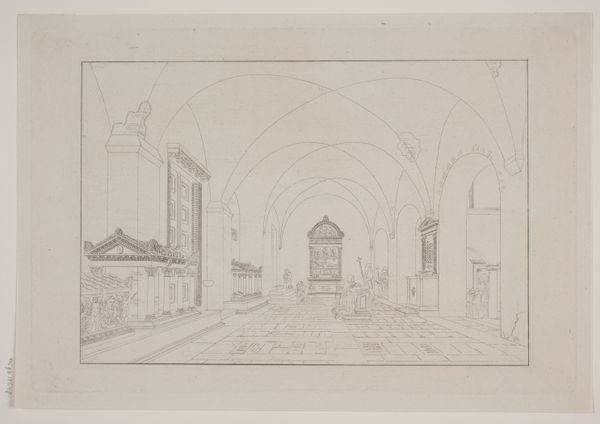
print, watercolor, architecture
#
water colours
#
baroque
# print
#
landscape
#
watercolor
#
islamic-art
#
watercolour illustration
#
genre-painting
#
watercolor
#
architecture
Dimensions: height 170 mm, width 258 mm
Copyright: Rijks Museum: Open Domain
Curator: Immediately, I'm struck by how airy yet structured this space feels. The pale watercolor gives a sense of lightness, while the repeating columns suggest a defined, almost rigid framework. What’s your initial take? Editor: A fitting contrast! To me, it speaks volumes about cultural exchange. We're looking at "View of the Lion Court in the Alhambra in Granada" by Pieter van den Berge. Likely created between 1694 and 1737, it's held at the Rijksmuseum, a work rendered in print and watercolor. But beyond the image itself, we encounter a European artist interpreting Islamic architecture. How do you see that artistic interpretation influencing the symbolic reading of the space? Curator: Precisely. The columns and arches, for instance, common features in Islamic architecture, aren't just structural, but visual representations of order, faith, and even aspiration. I see how van den Berge's rendering gives them a European clarity, a way to contain what might have seemed unfathomable complexity to a Western audience. Editor: It raises interesting questions about appropriation and representation. Was he accurately depicting the space, or was he filtering it through a European lens, emphasizing what conformed to European ideals of beauty and perspective, in an era steeped in Orientalism? What do the people depicted within its architecture suggest of the court's functions and the space it plays in court life? Curator: Absolutely, that Baroque sensibility definitely shapes the imagery. It lends the image a feeling of theater, a carefully staged scene where power, history, and perhaps even a touch of romantic exoticism converge, for consumption in Dutch society, of course. Editor: It also influences our current relationship to the court. Works like this served as both historical documents and artistic statements that shape modern understandings. What does its popular consumption tell us about cross-cultural interactions? Curator: Good question. The enduring interest in such images also suggests a deeply rooted human fascination with cultural otherness. Perhaps it mirrors an underlying quest for deeper understandings of space, history, power, and faith, even when seen through different lenses. Editor: That is a lot to think about. The work highlights art as both aesthetic form and crucial cultural mediator.
Comments
No comments
Be the first to comment and join the conversation on the ultimate creative platform.
